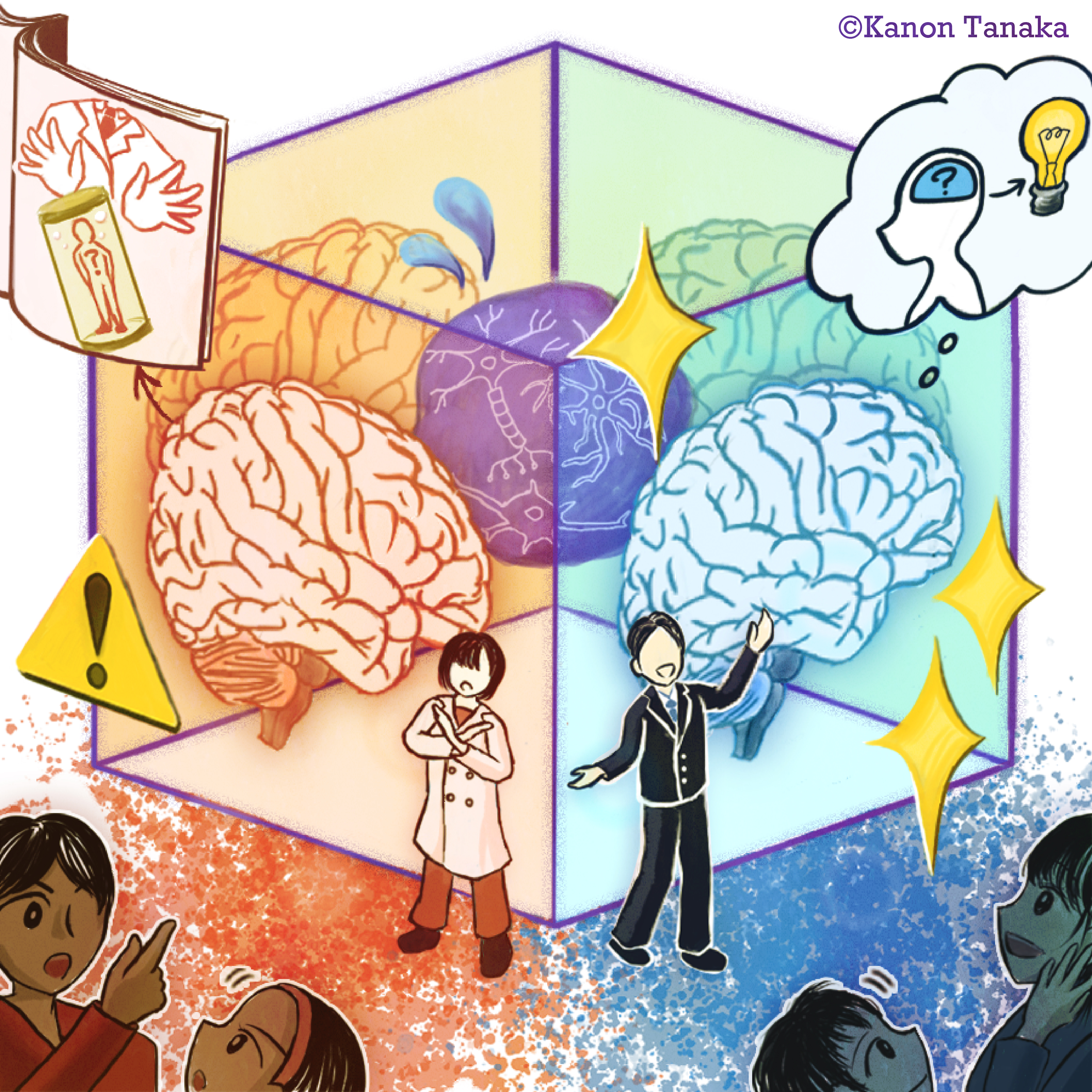News
April 18, 2023
Scientists are not making “thinking” brains in their laboratories
ASHBi has published an essay on how media and researchers’ portrayal of brain organoids are misleading and possibly detrimental to this young field of research

Credits: Kanon Tanaka
The headlines achieved their goals. People eagerly clicked on titles like “Tiny human brain grown in lab has eye-like structures that ‘see’ light” or “Mini brain organoids grown in lab mature much like infant brains”. To the unfamiliar, these claims may suggest scientists are growing miniature brains that can grow and think. In reality, scientists are using stem cells to grow structures that develop like the brain, but brain organoids are far from anything like the brains that grow in our bodies. The way the media speaks and writes of these scientific advances is alarming bioethicists like Dr. Tsutomu Sawai of ASHBi. In an essay seen in Trends in Biotechnology, Sawai and colleagues from Australia, Japan, and Singapore argue the need for scientists, ethicists, and media to work together so that the public does not misconstrue brain organoid research and unnecessarily restrict or oppose it.
Organoids describe stem cells that have been stimulated to model the growth of real organs. These models have led to invaluable information about molecular and cellular interactions that are essential for healthy development. They have also led to a better understanding of various diseases. Brain organoids, for instance, were instrumental for scientists to explain how the Zika virus causes microcephaly.
However, media frequently write of “mini brains” when they describe brain organoids, a term that even researchers including scientists sometimes prefer. Sawai sees evidence that this and other depictions by media and researchers are leading too many people to mistakenly believe that mini brains are similar to real brains and possess the potential to hold thoughts and consciousness.
“Brain organoids in the media are often exaggerated, portraying brain organoids as much closer to the human brain than they in fact are. Currently, they only mimic a small portion of human cerebral tissue,” he said.
The essay explains that misrepresentation of the true capabilities of brain organoids could fuel public distrust and even antipathy to a branch of research that is expected to reveal solutions for an assortment of brain diseases and new medical treatments.
The possibility of brain organoids eventually developing higher functions with more research cannot be ruled out, however. In fact, much like how they use animals to study all sorts of human functions, including emotions, scientists hope brain organoids can be used to give similar insights while at the same time reducing the number of animals needed for sound research. However, that day is far from now, which is why scientists, ethicists and the media must work together to educate the public and temper their expectations, Sawai and colleague argue.
“It is not as simple as giving value-neutral information,” he explained. “Researchers and the media must ensure that the public is receiving an accurate representation of the research.”
The essay recommends more prudence when describing the capabilities brain organoids have of higher brain functions. Headlines like those mentioned above will only increase the public’s attention on this potentially revolutionary research, making it imperative that the public has an accurate representation of brain organoids. “Research into brain organoids is still at an early stage, meaning now is a crucial time,” the essay writes.Paper Information
Kataoka, M., Gyngell, C., Savulescu, J., & Sawai, T., (2023) The importance of accurate representation of human brain organoid research. Trends in Biotechnology, DOI: 10.1016/j.tibtech.2023.02.010
